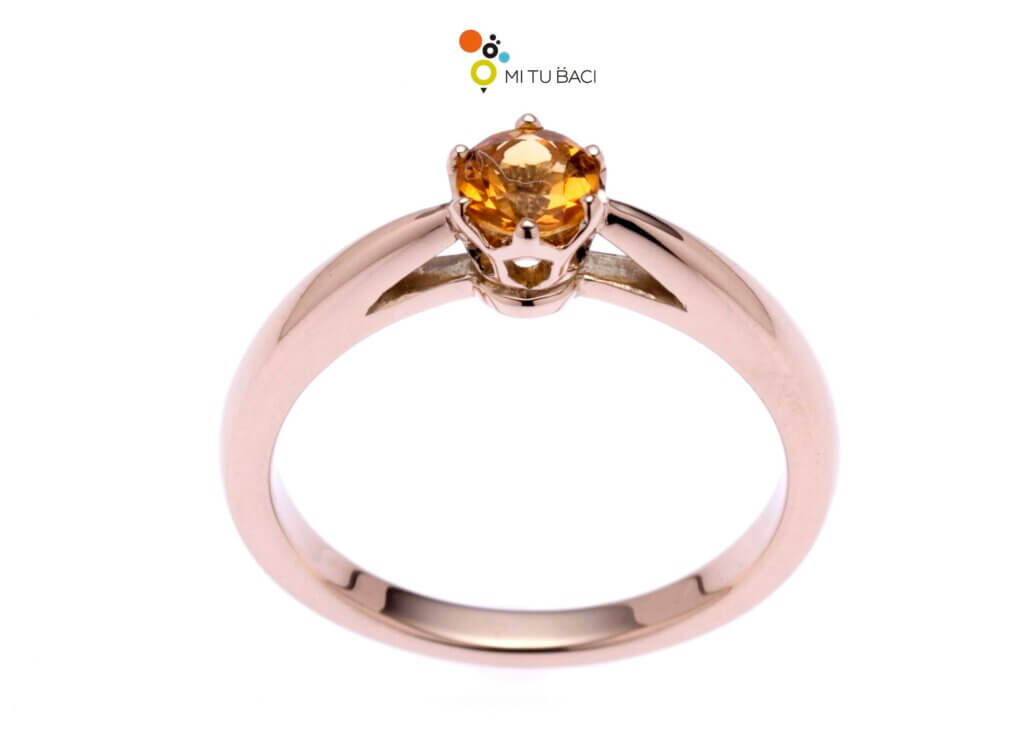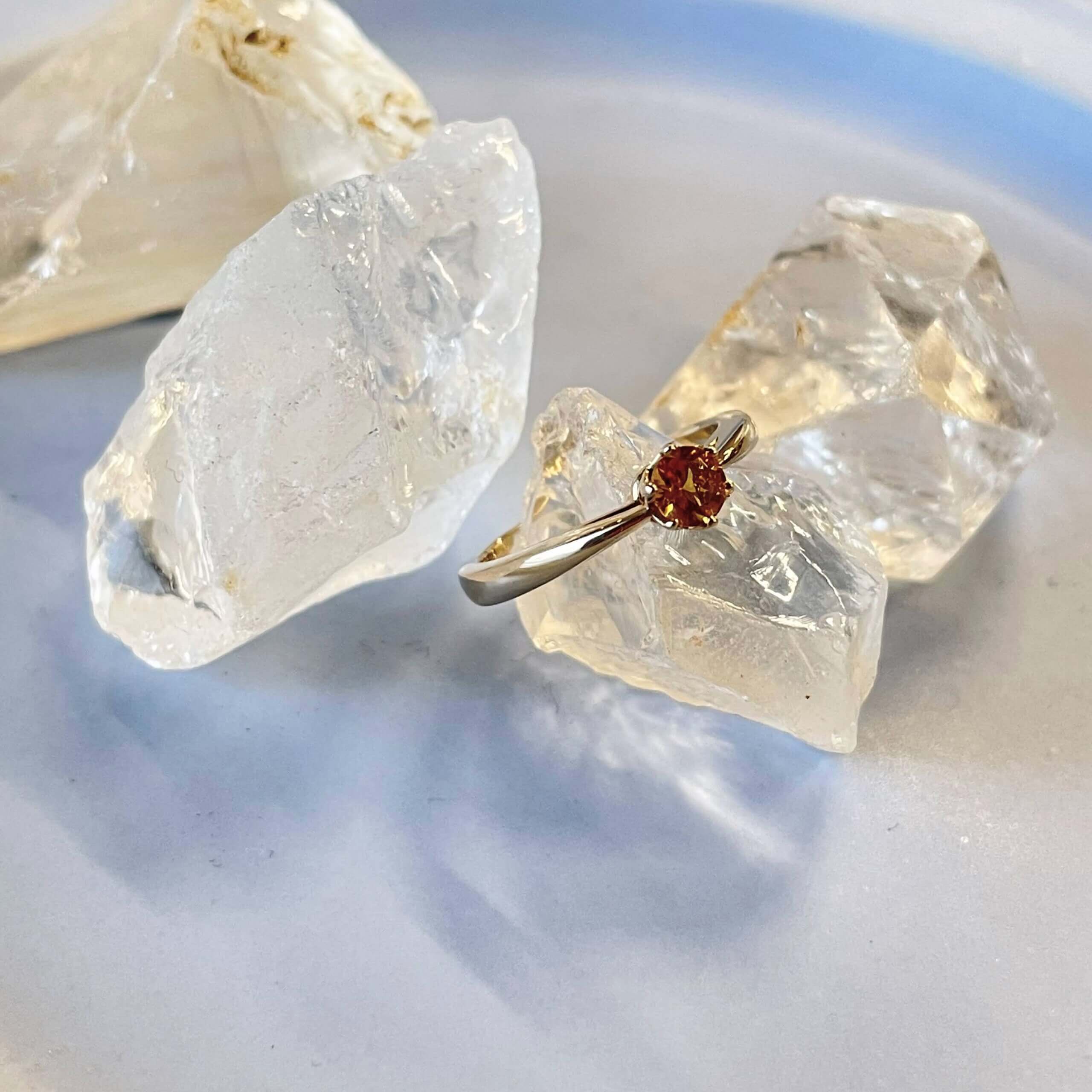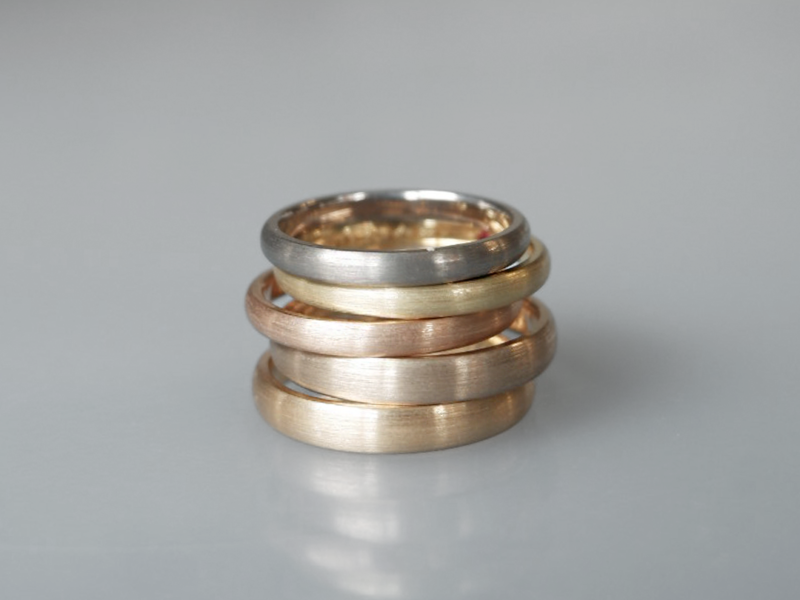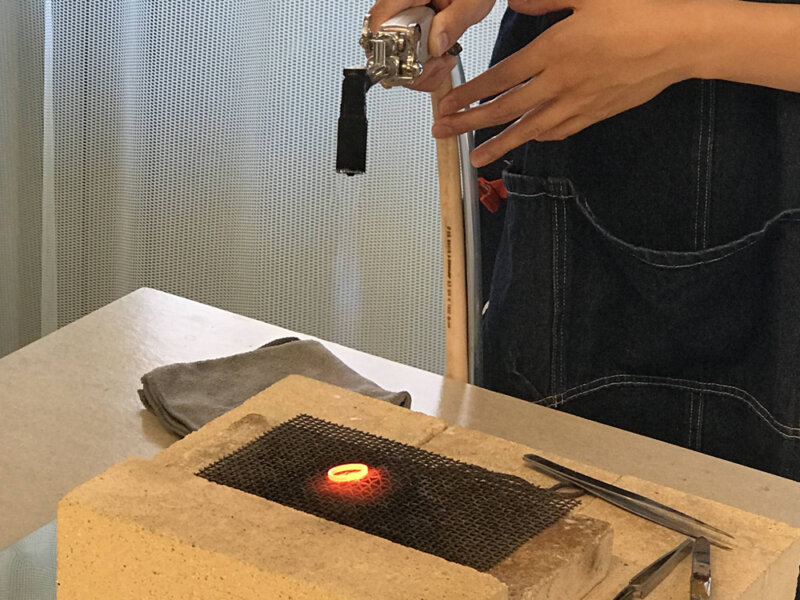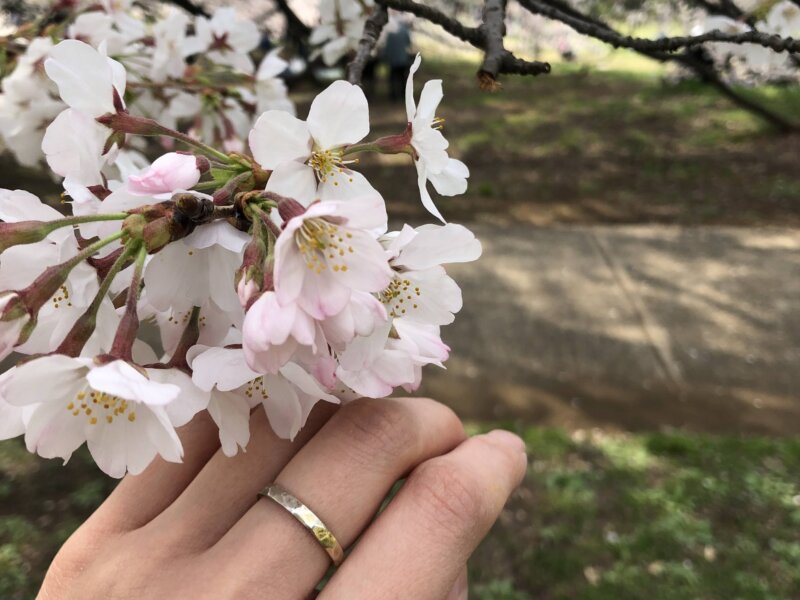November's birthstone is citrine.
In this issue, I would like to talk about citrine.
Citrine, like topaz, is the birthstone for November.
Its Mohs hardness is 7, and its good coloring and durability make it an ore that is easy to pick up even for those who do not usually touch gemstones.
The most commonly mined colors are yellow to tan yellow, orange, and brownish orange, making earth tones popular gemstones. The most popular shades of citrine are rustic, deep browns and reddish oranges.
Citrine comes in a wide range of colors, from darker to lighter shades of the same yellow color. All colors are attractive, but pure colors with no gray or black tints are generally more expensive.
It is no exaggeration to say that citrine is the most representative yellow gemstone.
Citrine is also considered a gemstone to commemorate the 13th anniversary of a marriage, while in Japan it is said to be either the 5th or 11th anniversary.
Citrine jewelry for a wedding anniversary is also a nice touch.
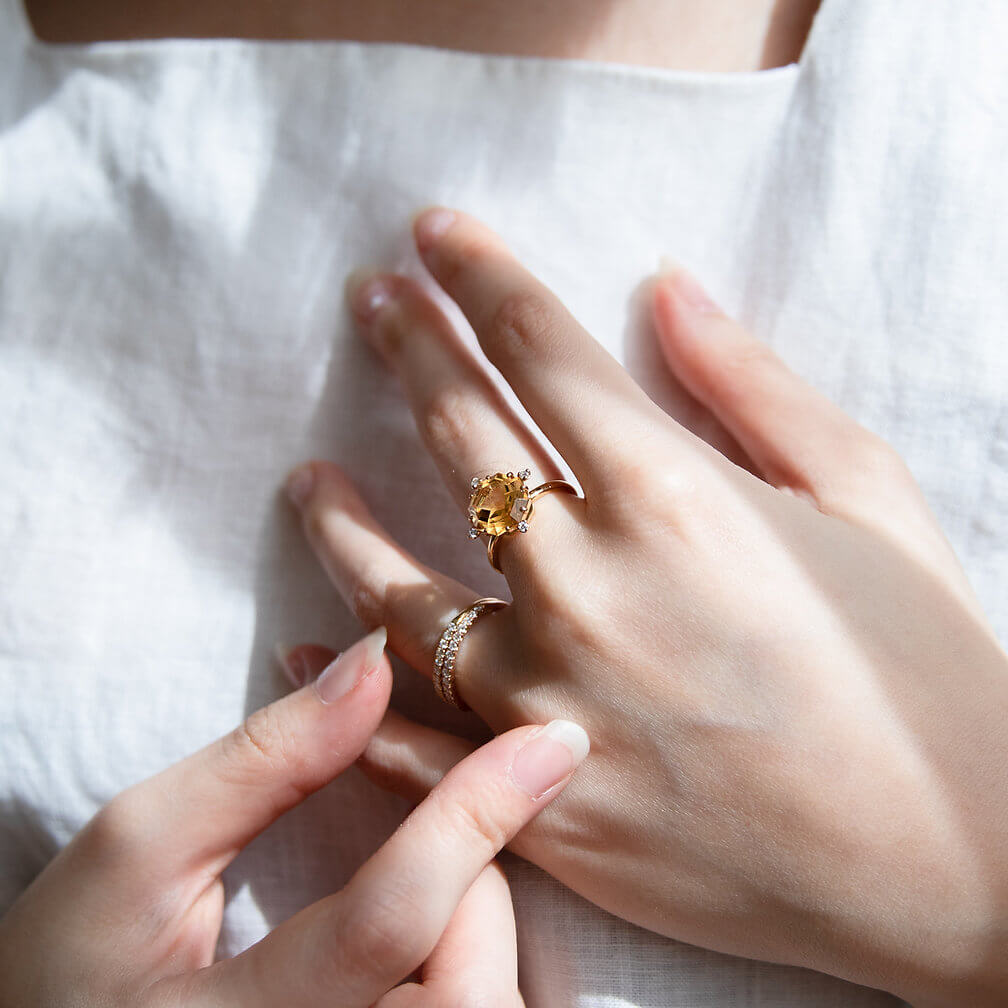
Origin of Citrine's Name
The name citrine is derived from the French word "citron," meaning the fruit lemon.
In the days when gemology was less developed, the transparent yellow color was very similar to topaz and was often mistakenly confused with it.
The dark brownish-orange color is called "Madeira citrine" because it resembles the color of Madeira wine from Spain, while the bright orange hue is called "tangerine citrine," which means tangerine or citrus fruit.
Citrine as a mineral and its associates
I would like to go into a little more detail about the citrine stone.
Citrine is a trade name and its mineral name is "quartz.
Quartz is a general term for minerals with the same chemical composition and similar characteristics, consisting of silicon dioxide. Because it is the most popular mineral in the earth's crust, it is mined in many parts of the world. This makes the composition of the mineral vary from region to region.
Quartz changes its color depending on the ingredients contained within, and each color is distributed under a different trade name.
Rock crystal is colorless and transparent, purple is amethyst, pink is rose quartz, light or dark brown is smoky quartz, and yellow is citrine. Quartz is one of the most widely distributed gemstones with high transparency and color, making it easy to find and compare the different colors side by side.
Amethyst and citrine are classified in a special position among quartz. Amethyst and citrine are actually ores with the same composition, but citrine occurs under special conditions. Amethyst crystallized underground is further heated by magma and turns yellow.
In 1883, it was confirmed in Brazil that similar changes can be seen when amethyst is artificially heated, and it is said to decolorize at approximately 420-450°C, after which it takes on the color of yellow or yellowish-brown citrine (yellow quartz).
There is a range of discoloration depending on the region of origin and the color of the amethyst. When amethysts from Brazil, Uruguay, Mexico, and Zambia were heated respectively, it was reported that there was no yellow discoloration in the Mexican amethyst after decolorization and no discoloration from purple in the Zambian amethyst.
This difference may be due to differences in the ingredients contained in different regions of origin.
Note that after discoloration, the color will not return to its original color.
Therefore, when resizing rings with amethyst clasps, care should be taken not to heat the stone.
There is also a gemstone called "ametrine," which is produced by processing the stone created by the above-mentioned discoloration reaction.
Also called "party color quartz," it is characterized by the appearance of two colors in one gemstone: the purple of amethyst and the yellow of citrine. It is a special ore created when amethyst is heated in one part of the gemstone under certain conditions, and only that part of the gemstone turns into citrine.
It is mined mainly in Bolivia, and because two colors can be enjoyed in one gemstone, it is packed with charm not found in other quartz.
Citrine has long been loved by a wide range of people for its simple color and ease of use.
Jewelry with citrine at MITUBACI.
At MITUBACI, such citrine can be fastened to rings, pendants, bangles, and necktie pins that are made in our workshops. In addition, our craftsmen carefully create birthstone rings using large stones that are known for their earthy color and beauty. It has an eye-catching volume that is recommended as a gift. The warmth of the color, like that of the sun, will give energy to those who see it and make them feel calm.
At MITUBACI, each natural citrine is carefully fastened by our craftsmen, who see and judge each piece with their own eyes.
If you are interested, why not visit?
